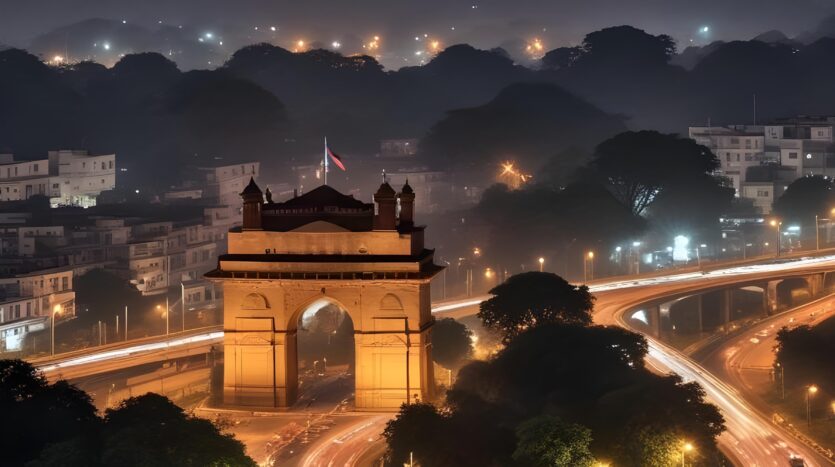The Difference Between Mumbai & Delhi Residential Living
India’s two iconic cities, Mumbai and Delhi, often find themselves compared in various aspects, from culture and cuisine to the cost of living and infrastructure. Both cities offer unique living experiences that cater to different preferences, lifestyles, and budgets. In this article, we explore the key differences between residential living in Mumbai and Delhi.
Real Estate Market Dynamics
Mumbai:
Mumbai is renowned as the financial capital of India, which directly impacts its real estate market. Space is at a premium in this densely populated city, leading to some of the highest property prices in the country. The residential spaces in Mumbai, particularly in prime areas like South Mumbai, Bandra, and Juhu, are characterised by compact apartments with modern amenities. Due to limited land availability, vertical living is a norm, with high-rise apartments dominating the skyline.
Delhi:
Delhi offers a more diverse real estate market. Being the capital city, Delhi has seen significant growth in both residential and commercial real estate. Unlike Mumbai, where space is scarce, Delhi has a more spread-out landscape, allowing for larger properties. Residential options range from luxury villas and independent houses in areas like South Delhi (Vasant Vihar, Greater Kailash) to high-rise apartments and affordable housing in regions like Dwarka and Rohini.
Lifestyle and Cultural Influence
Mumbai:
Mumbai is a city that never sleeps, and this reflects in the lifestyle of its residents. The fast-paced, cosmopolitan culture influences residential living, where convenience and accessibility to work and entertainment are prioritised. Many residential areas are located close to business hubs, making it easier for professionals to commute. The city’s vibrant nightlife, cultural events, and a mix of traditional and modern influences make it an attractive destination for young professionals and expatriates.
Delhi:
Delhi offers a more laid-back lifestyle compared to Mumbai, with a blend of old-world charm and modernity. The city’s rich history and cultural heritage are evident in its architecture and residential neighbourhoods. In Delhi, residential areas are often spacious and include large parks, wider roads, and lower population density. The presence of historic monuments, museums, and cultural festivals adds to the city’s allure, making it ideal for families and those who appreciate a slower pace of life.
Infrastructure and Connectivity
Mumbai:
Mumbai’s infrastructure is designed to accommodate its dense population, with an extensive public transport network including local trains, metro, and buses. However, the high population density leads to heavy traffic congestion, especially during peak hours. The city’s coastal geography also means that residential areas are often concentrated in specific zones, making real estate expensive and traffic inevitable.
Delhi:
Delhi’s infrastructure is more expansive, with broader roads, a well-connected metro network, and a variety of residential neighbourhoods scattered across the city. The city’s circular layout, with multiple ring roads, ensures that different parts of the city are accessible. Additionally, Delhi’s proximity to NCR (National Capital Region) cities like Noida, Gurugram, and Faridabad expands residential options for those looking for more space or affordable housing.
Cost of Living and Affordability
Mumbai:
The cost of living in Mumbai is among the highest in India, particularly when it comes to housing. The demand for residential spaces near business districts drives up prices, making affordability a significant challenge. While Mumbai offers luxurious living options, the high cost of real estate often results in smaller living spaces. For many, the trade-off is worth it due to the city’s job opportunities and vibrant lifestyle.
Delhi:
Delhi, on the other hand, offers a wider range of housing options across various price points. Whether it’s luxury villas or budget apartments, the city has something for everyone. The cost of living in Delhi is generally lower than in Mumbai, making it more affordable for families and individuals seeking larger living spaces.
Environmental Considerations
Mumbai:
Mumbai’s coastal location brings both advantages and challenges. While residents enjoy sea views and coastal breezes, the city is also prone to flooding during the monsoon season. The high humidity levels can also be uncomfortable for some residents. However, Mumbai’s proximity to the sea offers opportunities for waterfront living, which is highly sought after despite the associated risks.
Delhi:
Delhi’s climate is characterised by extreme temperatures, with hot summers and cold winters. Air quality is a major concern, particularly during the winter months when pollution levels spike. However, Delhi’s green spaces, including the numerous parks and gardens, provide a respite from the city’s hustle and bustle. Residential areas in South Delhi, in particular, are known for their greenery and spaciousness, offering a more serene living environment.
Conclusion
Both Mumbai and Delhi offer distinct residential living experiences shaped by their geography, culture, and economic roles. Mumbai is ideal for those who thrive in a fast-paced, cosmopolitan environment and are willing to compromise on space for the sake of convenience and access to the city’s dynamic lifestyle. Delhi, on the other hand, appeals to those who value space, affordability, and a blend of modern and traditional living. Ultimately, the choice between Mumbai and Delhi depends on individual preferences, lifestyle needs, and budget considerations. Whether you’re drawn to Mumbai’s energy or Delhi’s charm, each city offers a unique residential experience that reflects its character and history.

